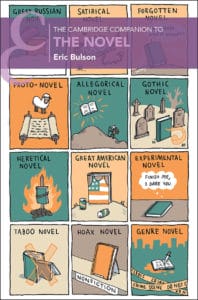Mason on the Mormon ‘middle way’; Bulson’s ‘novel’ approach to storytelling

Neither all-in nor all-out: That’s what the Salt Lake Tribune says about the attitudes of some members of the Church of Jesus Christ of Latter-day Saints to certain observances connected with their faith, such as the wearing of mandated religious garments or abstaining from coffee and alcohol.
The article, which considers how the impact of American culture has produced many members who identify as “relaxed but engaged” rather than as rigid adherents, features commentary by School of Arts & Humanities Dean Patrick Mason, who is also the university’s Howard W. Hunter Chair of Mormon Studies.
In this article, which is about a Mormon “middle way,” Mason himself strikes a middle way towards “half-in” Mormons even as he points out the advantages of more fully obedient church members who “are willing to make sacrifices for a long-term payoff.”
The article closes with his perspective on the nature of God, telling the reporter that believers’ decisions to fully participate or not finally come down to their conception of God as either requiring strict adherence or providing generous leniency to all.
Or, in the words of Mason’s aunt: “Will God keep a person out of heaven for drinking a cup of coffee?”
***
Novel ideas: Is the novel dead? Irrelevant? Useless? Hardly. In fact, it’s never been more vital or alive.
The novel, writes English Professor Eric Bulson in his introduction to The Cambridge Companion to the Novel, “prides itself on being new, ever in motion, not fixed in one place or even defined by one size. That, in effect, is what makes pinning this genre down such a daunting task.”
To attempt that daunting task, Bulson — who edited this essay collection for Cambridge University Press — assembled a distinguished lineup of critics to actually pin down the genre’s growth and evolution from its ancient origins into the present day.

Among his contributors are David James, who argues for the novel’s continuing primacy as the best medium for “deep concentration,” while Vilashini Cooppan and Priya Joshi consider its roles as commodity and global presence. Jan Baetens, Hugo Frey, and Jessica Pressman describe the rise of graphic novels and the movement of the novel from the printed page to the virtual domain of video games.
A necessity for every student of literature, Bulson’s Cambridge Companion to the Novel reminds us of the genre’s abiding power even in our techno-besotted age.
Or, as Bulson himself concludes in his introduction, “D. H. Lawrence was right: ‘The novel has a future.’ But it’s definitely not the one he could have imagined…”